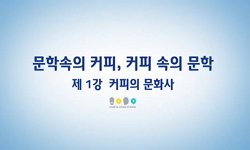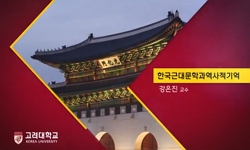This paper discussed the characteristics of regional literature during the period of Korean liberation by focusing on the theory of regional literature from Seol, Chang-Soo. Regional literature for the liberation period shows the paradoxical nature of...
http://chineseinput.net/에서 pinyin(병음)방식으로 중국어를 변환할 수 있습니다.
변환된 중국어를 복사하여 사용하시면 됩니다.
- 中文 을 입력하시려면 zhongwen을 입력하시고 space를누르시면됩니다.
- 北京 을 입력하시려면 beijing을 입력하시고 space를 누르시면 됩니다.

해방기의 지역문학론 -파성 설창수를 중심으로 = Theory of regional literature in period of Korean liberation -focusing on Seol, Chang-Soo
한글로보기https://www.riss.kr/link?id=A99644191
- 저자
- 발행기관
- 학술지명
- 권호사항
-
발행연도
2013
-
작성언어
-
-
주제어
지역문학 ; 민족문학 ; 해방기 ; 설창수 ; 김동리 ; 응향 ; 문예대중화 ; Regional literature ; National literature ; Korean liberation period ; Seol ; Chang-Soo ; Kim ; Dong-Ri ; 『Unghyang』 ; Literary popularization
-
KDC
700
-
등재정보
KCI등재
-
자료형태
학술저널
- 발행기관 URL
-
수록면
581-610(30쪽)
-
KCI 피인용횟수
2
- 제공처
-
0
상세조회 -
0
다운로드
부가정보
다국어 초록 (Multilingual Abstract)
This paper discussed the characteristics of regional literature during the period of Korean liberation by focusing on the theory of regional literature from Seol, Chang-Soo. Regional literature for the liberation period shows the paradoxical nature of a mismatch between the claims and the results. Left-wing or North Korea emphasized the spread of the ``local culture``, but this rather strengthened the control of the central area over the regions. <Eung-Hyang> event was the representative case. Right wing gave little attention to the literature of the region, and at this point, it was possible indigenous and distinctive literature was born. Nevertheless, as the left-wing and right-wing`s ethnic literary discourse during the liberation period regarded the nation/ethnic, a single and universal unit as its premise, the uniqueness of local literature was not the target of interest. The ``local literature`` could be great interest for the regions in the nature of ``local`` literature, but for the center, it was not the problem to be concerned. In this situation, The activities of Paseong Seol, Chang-Soo are one of the most valuable cases in the study of the local literature during the liberation time. He did many activities mostly in Jinju area in Kyungnam province during liberation, stressing the necessity of regional literature and showed a variety of activities for the establishment of a regional literature in conjunction. In comparison that the literature movement of other regions in this time didn`t show a significant theoretical deployment for the purpose and the way to establish local literature, Seol, Chang-Soo`s effort has meaning as an example representing the theory of local literature in the liberation period as well as establishing the local literature only in Jinju area. He reasoned the regional literature in the dimension of the national literature and his view of whole-person literature defined ``whole-person`` as one thing including the ethnic, humanity and divinity and organically connected the individual with the collective and the integral part with the whole. It was a theory of literature avoiding purity and claiming ``JunSunChamHoik`` in the opposite position of the national literature of ChungMoonHyup. Ironically, there shows similarity in many parts between his literary movement and theory and the theory of left wing and North Korea. 5 monolithic (Trinity or one body) principals which are tendency Trinity, literature-bureaucracy Trinity, literature-people Trinity, literature-Study Trinity and literature-construction Trinity, has similar way of practicing and its goal to the ones of establishing the national literature whose premises are the close link between the center and the left wing`s regional organizations, the bureaucratization and politicization of literary persons, popularization of the art and literature and establishment of a nation-state. The problem was his theory of whole-person literature``. The literature had to be closely linked to the overall environment, systems and all that surround it with an emphasis on practical aspects as long as it claims ``Monolithic body``. As any extension of the one body expanded, the literary theory of Seol, Chang-Soo and the left wing came to show some aspects similar to each other. In addition, it is still doubtful that the literary theory comprehensive of humanity and the gods could be the national literary theory.
참고문헌 (Reference)
1 이선영, "현대문학비평자료집" 태학사 1993
2 장상환, "해방직후 진주지역의 정치변동" 경남사학회 1995
3 박정선, "해방기 조선문학가동맹의 문화대중화 담론과 조직적 실천" 한국어문학회 (93) : 2006
4 이희환, "해방기 인천의 지역문학과 매체" 영주어문학회 19 : 5-44, 2010
5 오문석, "해방기 시문학과 민족 담론의 재배치" 한국시학회 (25) : 29-49, 2009
6 박용찬, "해방기 대구 ․ 경북 지역 문학매체와 학생시단의 위상" 국어교육학회(since1969) (47) : 277-298, 2010
7 박태일, "한국지역문학의 논리" 청동거울 2004
8 박태일, "한국 근대 지역문학의 발견과 파성 설창수" 한국민족문화연구소 (1) : 223-258, 2009
9 박민규, "조선문학가동맹 ‘詩部’의 시 대중화 운동과 시론" 한국시학회 (33) : 183-217, 2012
10 "자유민보"
1 이선영, "현대문학비평자료집" 태학사 1993
2 장상환, "해방직후 진주지역의 정치변동" 경남사학회 1995
3 박정선, "해방기 조선문학가동맹의 문화대중화 담론과 조직적 실천" 한국어문학회 (93) : 2006
4 이희환, "해방기 인천의 지역문학과 매체" 영주어문학회 19 : 5-44, 2010
5 오문석, "해방기 시문학과 민족 담론의 재배치" 한국시학회 (25) : 29-49, 2009
6 박용찬, "해방기 대구 ․ 경북 지역 문학매체와 학생시단의 위상" 국어교육학회(since1969) (47) : 277-298, 2010
7 박태일, "한국지역문학의 논리" 청동거울 2004
8 박태일, "한국 근대 지역문학의 발견과 파성 설창수" 한국민족문화연구소 (1) : 223-258, 2009
9 박민규, "조선문학가동맹 ‘詩部’의 시 대중화 운동과 시론" 한국시학회 (33) : 183-217, 2012
10 "자유민보"
11 "영문"
12 "영남문학"
13 "연합신문"
14 김봉희, "설창수 문학의 이해" 경진 2011
15 "서울신문"
16 신형기, "북한문학사" 평민사 2000
17 권보드래, "민족문학과 한국문학" 민족문학사학회 (44) : 197-234, 2010
18 "문학"
19 "동아일보"
20 이순욱, "광복기 경남·부산 시인들의 문단 재편 욕망과 해방 1주년 기념시집 『날개』" 한국비평문학회 (43) : 189-226, 2012
21 송창우, "경남지역 문예지 연구" 慶南大學校 大學院 1996
22 유재천, "경남의 시인들 1" 박이정 2005
23 "건설기의 조선문학"
24 오태호, "『응향』결정서’를 둘러싼 해방기 문단의 인식론적 차이 연구" 중앙어문학회 (48) : 37-64, 2011
25 김한식, "『백민』과 민족문학- 해방 후 우익 문단의 형성" 상허학회 20 : 146-168, 2007
26 김재용, "[단행본] 북한 문학의 역사적 이해" 문학과지성사; 서울 1994
27 김현정, "1940년대 후반 대전지역 문학 연구" 어문연구학회 71 : 305-329, 2012
동일학술지(권/호) 다른 논문
-
- 우리어문학회
- 심상교 ( Sang Gao Sim )
- 2013
- KCI등재
-
- 우리어문학회
- 윤송아 ( Song Ah Yoon )
- 2013
- KCI등재
-
은국산인의 「누구의 죄」와 무서명 「박쥐우산」의 필자 문제
- 우리어문학회
- 최성윤 ( Sung Yun Choi )
- 2013
- KCI등재
-
한국교육문화론의 연구사 비판 -한국문화교육론의 성찰적 이해와 새로운 방법 모색을 위한 시론
- 우리어문학회
- 김종수 ( Jong Soo Kim )
- 2013
- KCI등재
분석정보
인용정보 인용지수 설명보기
학술지 이력
| 연월일 | 이력구분 | 이력상세 | 등재구분 |
|---|---|---|---|
| 2027 | 평가예정 | 재인증평가 신청대상 (재인증) | |
| 2021-01-01 | 평가 | 등재학술지 유지 (재인증) |  |
| 2018-01-01 | 평가 | 등재학술지 유지 (등재유지) |  |
| 2015-01-01 | 평가 | 등재학술지 유지 (등재유지) |  |
| 2011-01-01 | 평가 | 등재학술지 유지 (등재유지) |  |
| 2009-01-01 | 평가 | 등재학술지 유지 (등재유지) |  |
| 2006-01-01 | 평가 | 등재학술지 선정 (등재후보2차) |  |
| 2005-01-01 | 평가 | 등재후보 1차 PASS (등재후보1차) |  |
| 2003-07-01 | 평가 | 등재후보학술지 선정 (신규평가) |  |
학술지 인용정보
| 기준연도 | WOS-KCI 통합IF(2년) | KCIF(2년) | KCIF(3년) |
|---|---|---|---|
| 2016 | 1.03 | 1.03 | 0.83 |
| KCIF(4년) | KCIF(5년) | 중심성지수(3년) | 즉시성지수 |
| 0.93 | 0.96 | 1.437 | 0.46 |




 KISS
KISS






